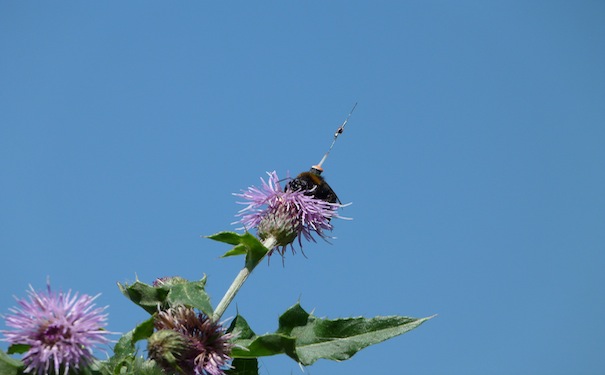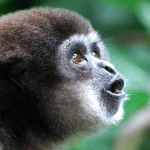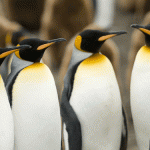
Radar transponders track bumblebees’ navigation patterns to learn how they find the best foraging route. Image: Stephan Wolf
Brainiac bumblebees buzzing with mathematical solutions.
With the arrival of spring comes the familiar buzz of bees, however their pirouettes from flower to flower are anything but random. Collaborating with the Harmonic Radar Group at Rothamsted Research, scientists from Queen Mary, University of London used radar tracking to monitor bumblebees (Bombus terrestris) and figure out how they choose the best route during their foraging expeditions.
Previous studies by Dr Mathieu Lihoreau and his colleagues found that bees undergo a process of trial and error to find the optimum travel route that minimises flight paths to reduce their energy intensive journey. The study published recently in PLOS Biology deciphered how bumblebees discover flowers, store the location in their spatial memory and test the most efficient path between each plant over a large spatial scale.
“It is the first time that this route optimisation behaviour was observed in natural conditions,” Lihoreau said.
The researchers arranged five artificial flowers in a 50-metre-sided mown pasture. The distance between them ensured that the trained bees did not wander from the experimental site. The flowers had landing platforms fitted with motion-triggered webcams and in the middle of each flower the researchers placed drops of sucrose — about one-fifth of a bumblebee’s crop. The researchers then released bees individually from a nest box about 60 metres from the nearest flower and used the webcams and transponders attached to each insect to follow their traplines during consecutive foraging bouts.
“Using computer algorithms we were able to simulate the route optimisation dynamics observed in real bees,” explained Lihoreau. “Our model suggests that each time a bee tries a novel route, it compares the length of this route to the length of the shortest route experienced so far. If the new route is found shorter, it is kept in memory. Otherwise another route is tried.”
They found the bees established traplines connecting all five flowers in an average of 26 foraging trips, trying only 20 of a possible 120 routes. Between their first and last foraging trips, they had reduced their total travel distance from 1,953 metres to 458 metres, a reduction of 80 per cent.
“These studies showed that bees not only develop regular routes to link multiple flowers but also that these routes are often close to the optimal path (the shortest possible route between flowers). This optimisation performance is not trivial. In fact the task is analogous to a famous mathematical problem The Travelling Salesman Problem“, Lihoreau commented. “It also opens up new possibilities for the study of insect navigation and for the understanding simple algorithms (decision rules) insects use to produce complex navigation.”
Source: PLOS Biology






